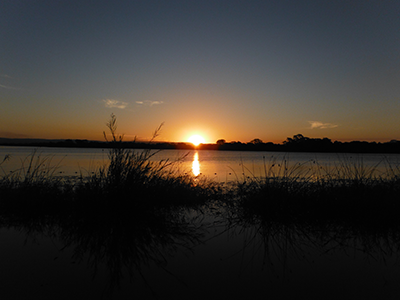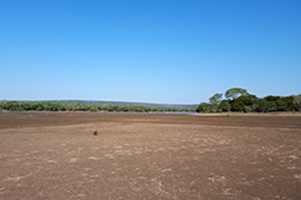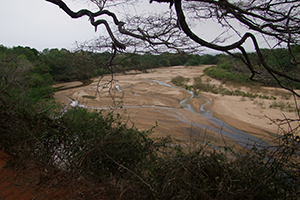Thousands of people rely on the floodplain of the Lower Phongolo River in KwaZulu-Natal, as do millions of fish, frogs, birds, insects and other aquatic animals. But how can they all co-exist sustainably and what is needed to maintain the delicate balance of South Africa's biggest, richest and most diverse floodplain ecosystem?
Finding the answers is the quest of a team of South African, Japanese and Belgian aquatic biologists, ecotoxicologists, hydrologists and social scientists led by the Water Research Group of the Unit for Environmental Sciences and Management at the Potchefstroom Campus of the North-West University (NWU)."The human population has increased from 20 000 to over 100 000 over the past three decades, and the people are heavily dependent on the natural resources of the floodplain," says Prof Victor Wepener, an aquatic ecotoxicologist and director of the School of Biological Sciences at the campus. "Our task is to look at how to utilise those natural resources in a sustainable way."

Breath-taking beauty of the Ndumo sunset.
Impact of development
This task has not been made easier by increased development. Until the late 1960s, the Phongolo floodplain was replenished and nourished each year by the natural flooding cycle of the Phongola River. Then the Pongolapoort Dam was built to meet agricultural needs, changing the natural ebb and flow. Artificial flood release replaced the ancient natural cycle, affecting the floodplain in a myriad of subtle ways.
"The floodplain has about 40 species of fish and the pans are major breeding areas for many of them," says Prof Nico Smit, an ecologist and director of the Unit for Environmental Sciences and Management. "If the flood release is not big enough, the fish are trapped in the pans and cannot get back into the river." The timing and volumes of water released from the dam are also vital for the breeding and survival of the fish because the incoming water flushes out the floodplain system and brings in nutrients.
The human element is a critical factor in the Phongolo floodplain. "Community wellbeing is an important part of the work," says Prof Wepener. "This is where the social scientists on the team come in. They will give us indications of what resources are valued by the people of the floodplain and whether the community has observed changes in the ecosystem's services and infrastructure over the past 10 years."
"The wellbeing of the community could well be related to the health of the ecosystem," he says. "If the people are not happy, chances are that this is because the environment is not being looked after."
DDT in the ecosystem
Assessing the ecological state of the floodplain itself is the work of the ecologists, ecotoxicologists and biologists, who have been visiting the floodplain three times a year for the past six years to collect fish, frog and bird samples for an eco-status survey. "We are looking at the natural ecological structure of the floodplain, including species diversity, as well as the ecological health of the infrastructure," says Prof Smit.
"Ecotoxicology is part of this because the Phongolo floodplain is a high-risk malaria region," adds Prof Wepener. "Mosquitoes are controlled through indoor residual DDT spraying, which is supposedly not released into the environment, but DDT does enter the ecosystem in a number of ways. We are looking at the possible transfer of DDT to the environment and the impact of this on aquatic life and people."
Collaboration with foreign universities
The DDT analyses are being handled by Japan's Hokkaido University, with whom the NWU has an academic and research memorandum of understanding. This includes training NWU master’s and PhD students on the finer details of ecotoxicological analysis.
An investigation into the interrelationship of the river and the floodplain pans forms part of a collaborative project with the universities of Leuven and Antwerp in Belgium. The collaboration includes the training of PhD students in a “sandwich” programme, meaning they will graduate from both the North-West University and the respective Belgian universities.
"One of the great things about the project is the exchange of ideas and students with our international partners in Belgium and Japan, and the fact that we have the opportunity to work for seven to eight years on the same ecosystem," says Prof Wepener.
 |
 |
|
| Drought has a devastating impact as can be seen in these photos of the Nyamithi Pan and the Usuthu River. | ||
